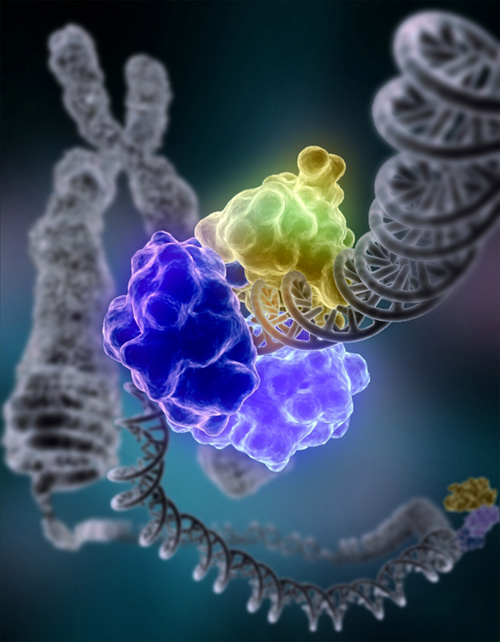mutation vs repair
[...]
Harmful mutations
Changes in DNA caused by mutation can cause errors in protein sequence, creating partially or completely non-functional proteins. To function correctly, each cell depends on thousands of proteins to function in the right places at the right times. When a mutation alters a protein that plays a critical role in the body, a medical condition can result. A condition caused by mutations in one or more genes is called a genetic disorder. Some mutations alter a gene's DNA base sequence but do not change the function of the protein made by the gene. Studies of the fly Drosophila melanogaster suggest that if a mutation does change a protein, this will probably be harmful, with about 70 percent of these mutations having damaging effects, and the remainder being either neutral or weakly beneficial.[35] However, studies in yeast have shown that only 7% of mutations that are not in genes are harmful.[36]
If a mutation is present in a germ cell, it can give rise to offspring that carries the mutation in all of its cells. This is the case in hereditary diseases. On the other hand, a mutation may occur in a somatic cell of an organism. Such mutations will be present in all descendants of this cell within the same organism, and certain mutations can cause the cell to become malignant, and thus cause cancer.[37]
Often, gene mutations that could cause a genetic disorder are repaired by the DNA repair system of the cell. Each cell has a number of pathways through which enzymes recognize and repair mistakes in DNA. Because DNA can be damaged or mutated in many ways, the process of DNA repair is an important way in which the body protects itself from disease.[...]
http://en.wikipedia.org/wiki/Mutation
[...]Sources of damage
DNA damage can be subdivided into two main types:
1. endogenous damage such as attack by reactive oxygen species produced from normal metabolic byproducts (spontaneous mutation), especially the process of oxidative deamination;
1. also includes replication errors
2. exogenous damage caused by external agents such as
1. ultraviolet [UV 200-300nm] radiation from the sun
2. other radiation frequencies, including x-rays and gamma rays
3. hydrolysis or thermal disruption
4. certain plant toxins
5. human-made mutagenic chemicals, especially aromatic compounds that act as DNA intercalating agents
6. cancer chemotherapy and radiotherapy
7. viruses [5]
The replication of damaged DNA before cell division can lead to the incorporation of wrong bases opposite damaged ones. Daughter cells that inherit these wrong bases carry mutations from which the original DNA sequence is unrecoverable (except in the rare case of a back mutation, for example, through gene conversion).[...]
http://en.wikipedia.org/wiki/DNA_repair







0 Comments:
Post a Comment
Subscribe to Post Comments [Atom]
<< Home